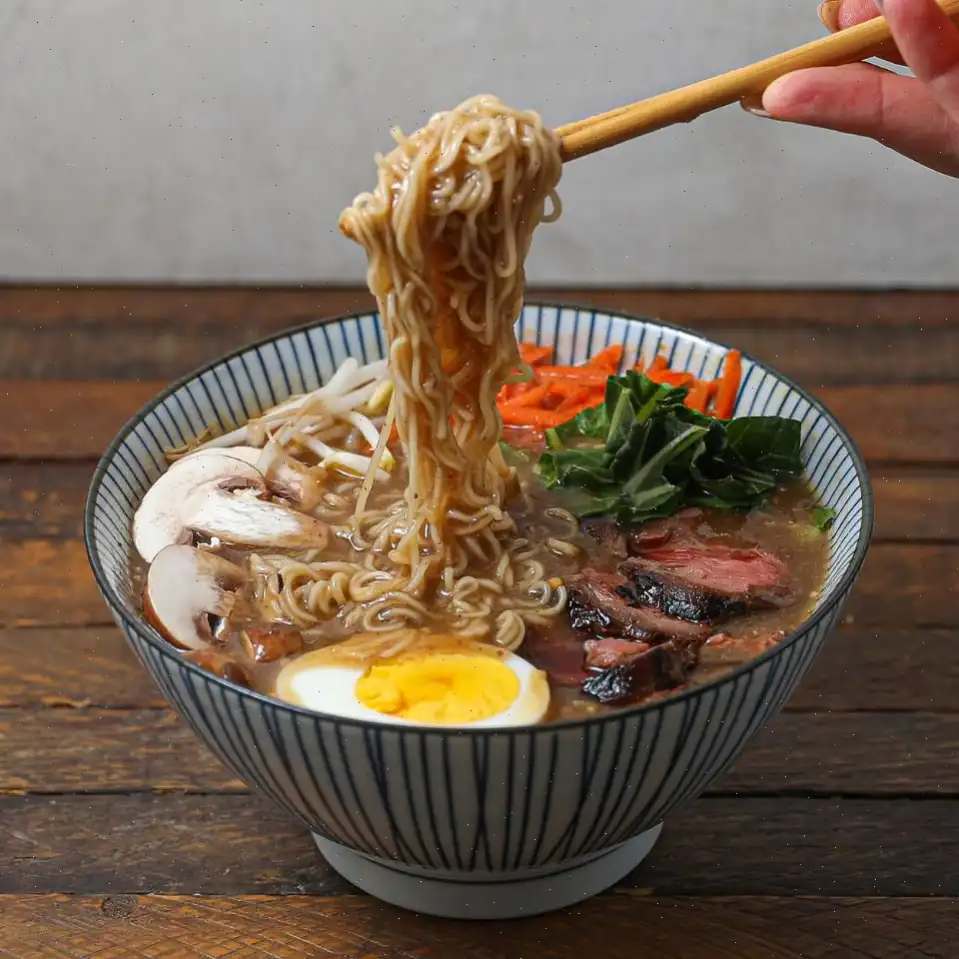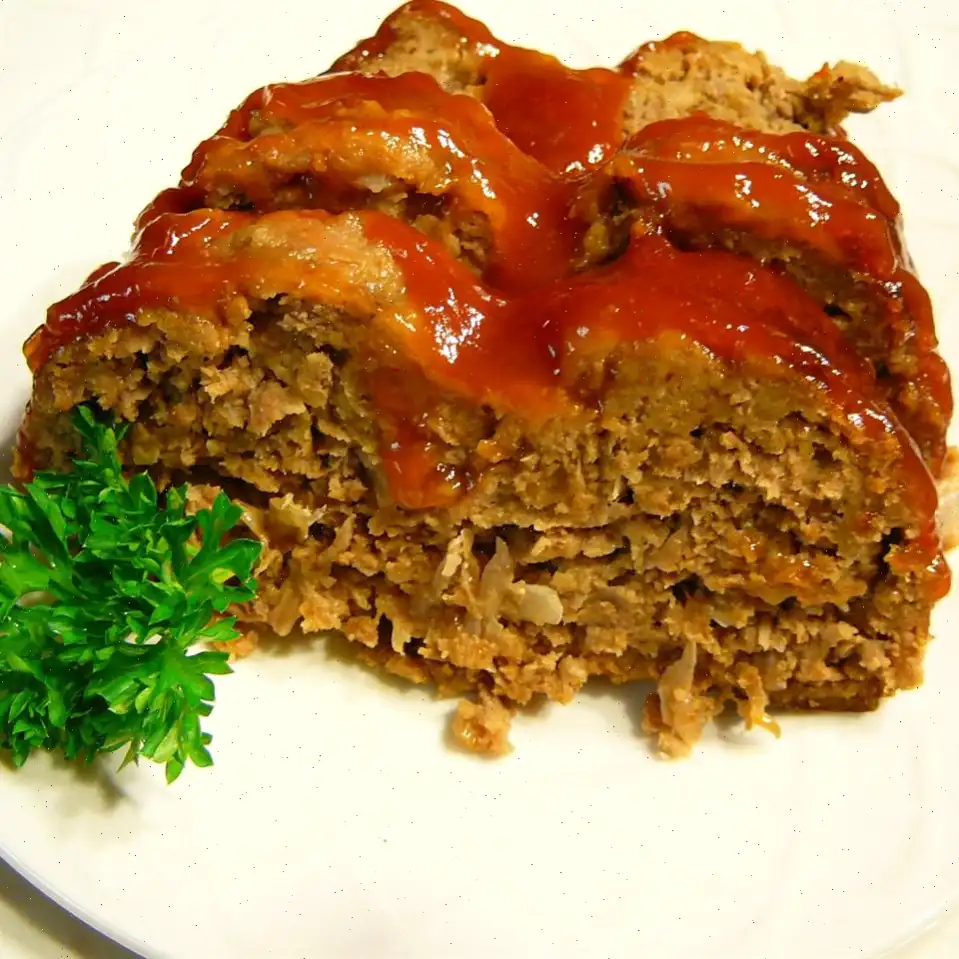
Beef Miso Ramen Recipe
Ingredients
This recipe yields 2 servings. Ingredient amounts are provided for the original recipe; cooking times and steps remain the same regardless of scaling. Note that some recipes may not scale perfectly.
- 1 (8 ounce) beef sirloin steak
- cup gluten-free soy sauce (tamari)
- 1 teaspoon coconut oil
- 4 cups beef broth
- 2 teaspoons miso paste
- 1 teaspoon minced garlic
- 1 teaspoon sesame oil
- 2 (3 ounce) packages ramen noodles
- Salt and freshly ground black pepper, to taste
Directions
- In a lidded plastic , combine the steak with soy sauce. Cover and refrigerate for 2 hours to let the flavors infuse.
- Remove the steak from the marinade, shaking off any excess liquid. Discard the remaining marinade.
- Heat coconut oil in a skillet over medium-high heat. Add the steak and cook 3 to 4 minutes per side until the outside is firm but the center remains juicy and reddish-pink. A thermometer should read 130F (54C) for medium-rare. Remove steak from the skillet and let it rest for 10 minutes.
- While the steak rests, pour beef broth into a saucepan. Stir in miso paste, garlic, and sesame oil, then bring to a gentle boil over medium heat.
- Once the broth is simmering, add the ramen noodles and cook for about 3 minutes until tender. Season with salt and pepper to taste.
- Divide noodles and broth evenly between two bowls. Slice the rested steak and arrange on top of the noodles. Serve immediately.
Nutrition Facts (per serving)
Nutrition data includes the full amount of marinade ingredients. Actual intake of marinade may vary.
- Calories: 454
- Fat: 25g (32% DV)
- Saturated Fat: 10g (51% DV)
- Cholesterol: 104mg (35% DV)
- Sodium: 6100mg (265% DV)
- Carbohydrates: 13g (5% DV)
- Dietary Fiber: 1g (5% DV)
- Sugars: 1g
- Protein: 44g (87% DV)
- Vitamin C: 0mg (0% DV)
- Calcium: 81mg (6% DV)
- Iron: 4mg (23% DV)
- Potassium: 946mg (20% DV)
*Percent Daily Values are based on a 2,000 calorie diet. Your daily values may vary. Nutrient information is based on available data; consult a doctor or dietitian for medically restrictive diets.
The History and Cultural Significance of Beef Miso Ramen
Beef Miso Ramen is a modern twist on traditional Japanese ramen, which originated in China but became an iconic Japanese dish in the early 20th century. While pork-based broths were more common initially, the combination of beef and miso paste emerged as a popular variant in Japan after World War II, when beef became more accessible. The use of misoa fermented soybean pasteadds a deep, savory flavor that distinguishes this ramen from simpler broths. Over time, Beef Miso Ramen has evolved into a comfort food that balances hearty meatiness with rich umami flavors.
Regional Variations
In Japan, miso ramen has strong regional identities. The most famous comes from Hokkaido, where the colder climate inspired a richer, thicker miso broth often enhanced with butter and corn. Beef Miso Ramen often incorporates these northern influences, although local chefs may adjust the sweetness or saltiness of the miso. In contrast, urban areas like Tokyo favor lighter broths with a cleaner, more refined flavor. International adaptations sometimes substitute traditional ramen noodles with rice or gluten-free varieties to suit dietary preferences.
Differences from Similar Dishes
Beef Miso Ramen differs from other ramen varieties primarily in its choice of protein and the flavor profile of the broth. Unlike Shoyu Ramen, which is soy sauce-based and lighter, or Tonkotsu Ramen, which relies on creamy pork bone broth, Beef Miso Ramen offers a bold, savory umami depth with a slightly nutty undertone from the miso. The steak topping also provides a contrasting texture to the soft noodles and tender broth, setting it apart from shredded pork or chicken versions.
Where It Is Typically Served
Beef Miso Ramen is commonly found in Japanese ramen shops, izakayas, and modern Asian-fusion restaurants. It is also gaining popularity in Western cities where ramen culture has taken hold. Many chefs serve it as a signature dish in casual dining settings, often garnished with scallions, sesame seeds, or soft-boiled eggs. In Japan, it is typically enjoyed during colder months for its warming, hearty qualities.
Interesting Facts
- Miso paste, a key ingredient, has been used in Japanese cuisine for over 1,000 years and is rich in probiotics.
- While ramen is often associated with instant noodles, authentic Beef Miso Ramen relies on fresh or high-quality dried noodles for the best texture.
- The combination of beef and miso is considered relatively modern in Japanese culinary history, emerging in the mid-20th century.
- International variations sometimes use alternative proteins such as tofu, chicken, or seafood, adapting the flavor while keeping the miso base.
- Ramen has become a global phenomenon, with specialized shops in cities like New York, London, and Sydney offering regional Japanese flavors including Beef Miso Ramen.
Overall, Beef Miso Ramen exemplifies how traditional Japanese ingredients can be creatively combined with diverse proteins to create a comforting, flavorful meal that appeals to both traditionalists and modern food enthusiasts alike.
FAQ about Beef Miso Ramen Recipe
Comments
SandyLox3898
10/06/2025 01:52:54 PM
jh
Chris Keller
11/08/2024 01:13:15 AM
Not bad at all. I didn't have miso paste, I substituted fish sauce, it came out well. I assume you discard the flavor pack from the ramen, I did.
Monica
09/10/2025 09:57:33 PM
This tastes pretty good, especially when the weather gets cooler the only changes I made was to ditch the boiled egg ( not a fan) added shredded Swiss chard from the garden, added to taste- fish sauce. Will make again.
David Edwards
05/15/2025 12:29:21 AM
Honestly, I’m not usually a cook, but wow.
Karen Adams
01/20/2025 11:05:31 PM
I’ll make this again for sure.
Cynthia Hernandez
01/07/2025 01:27:34 AM
Everyone asked me for the recipe!
PuffyBroth7172
08/12/2024 10:37:20 PM
Used rice noodles instead and it turned out amazing!








